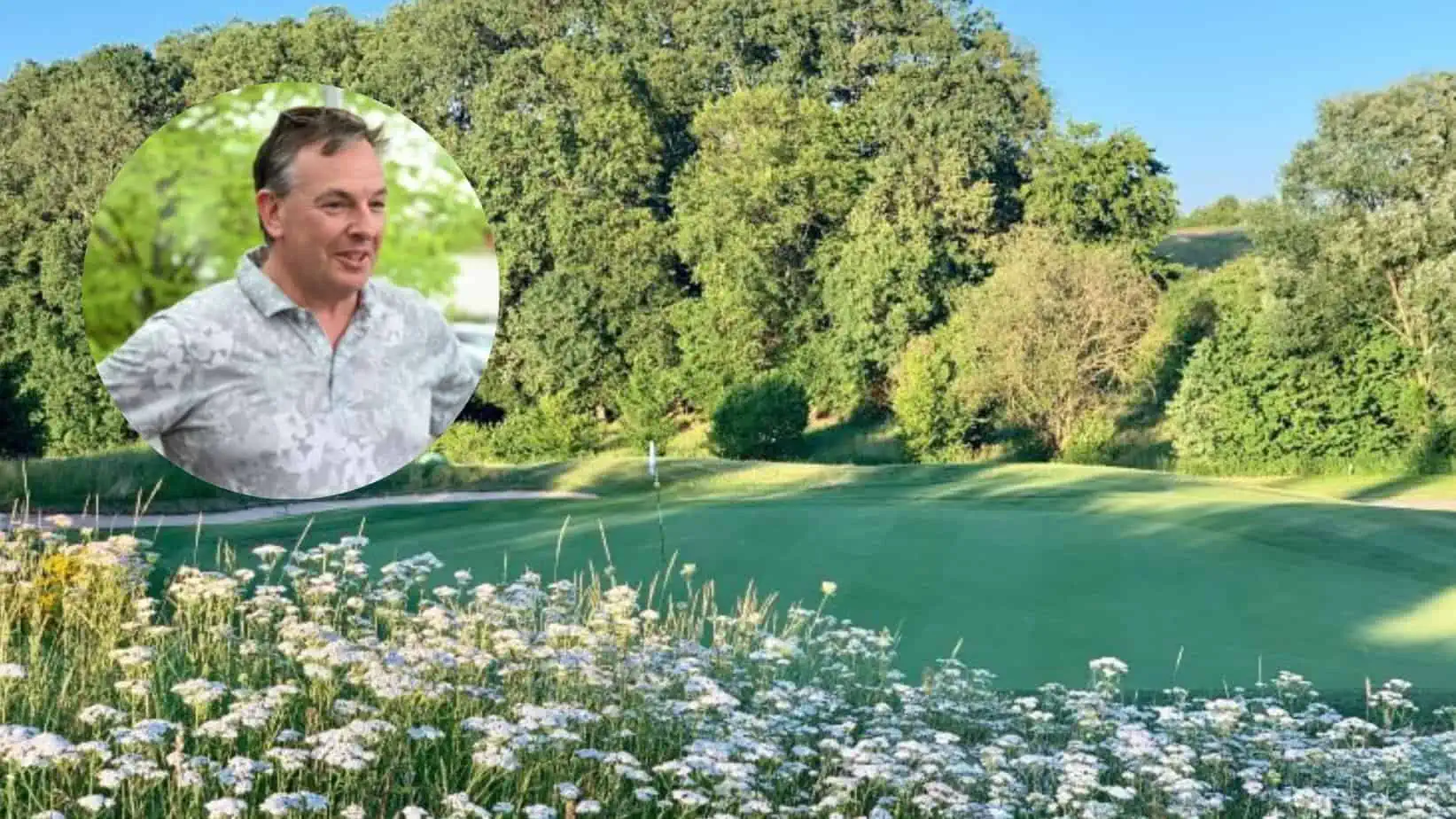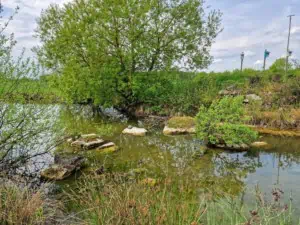GC Herzogenaurach faces up to the issues of the future
It was a good three years ago that the Blühpakt Bayern celebrated its premiere here at GC Herzogenaurach. Three years have passed in which Bernd Dürrbeck, President of the Herzogenaurach Golf Club, has learned two things above all in this role: “I have to deal with plenty of things that now have only limited to do with golf” and “the question of the sustainable management of a golf facility is no longer about should or want to, it is simply a social obligation.”
Water management needs a working group
While Dürrbeck draws this conclusion, he sits on the terrace of the clubhouse, which is actually to make way for a new building. After all, the non-profit association is running smoothly, it has almost 1200 members, and its finances are in order. The promotion of biodiversity is also progressing dynamically. The support association has organized numerous tree donations, the orchards are just blooming and also the perennial meadows, not always easy to develop, have made. When they built a Benjes hedge in February, 20 volunteers were immediately on the scene.
It is other topics that currently dominate Dürrbeck’s everyday life. It is the water supply in the first place. GC Herzogenaurach is one of those clubs whose water permit is expiring. He is not the only one about whom the authorities are now asking questions: Where does the club collect water to date and how much? How does the club envision sprinkling the fairways in the future, and especially with what kind of water? The cooperation with the local authorities is really good, Dürrbeck asserts, but as a golf club you now have to develop a strategy for the water supply. “For now, we want to set up a working group,” he sums up.
Electrification, solar system and CO₂ reporting
Raising awareness of the issue among the membership already began last year. “We always bring up the water theme in the newsletter,” Dürrbeck notes. The objective for him is clear: “In five years, we want to collect as much surface water as we can.” However, regulating the water supply is not enough. “Now, after all, there’s also the issue of electric and solar.” E-fueling stations have now been created, but because there is also the question of the CO₂ footprint, Dürrbeck would like to see the club’s machinery and buildings powered by self-generated energy in the future.
He does not yet know how GC Herzogenaurach will manage all this, because on top of that there are the price increases and the limitation of membership fees for a non-profit club like this. “How clubs with fewer members than us can handle everything, I don’t see anyway,” he adds.
He looks neither frustrated nor discouraged in the process. More like someone who accepts a challenge positively because they know the goal is not debatable. The question of “what’s in it for us?” is not asked here in the presidium, he explains in good spirits. “We just have to do this.”








